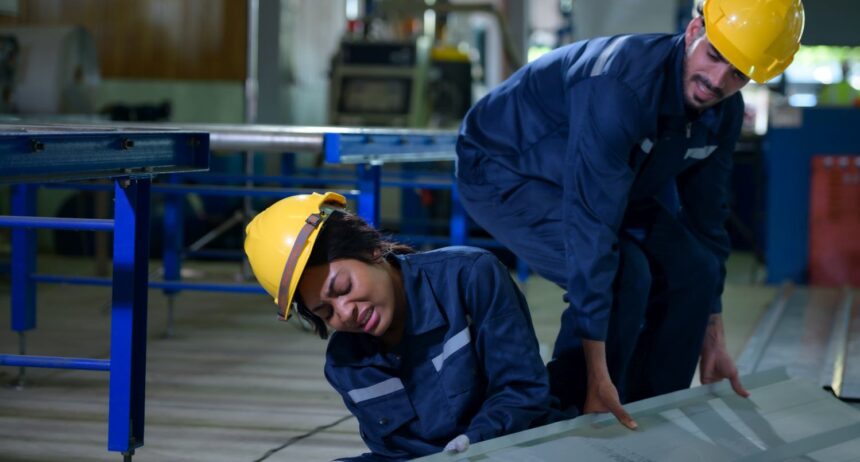Industrial facilities stand as the backbone of modern society, driving economic progress and technological advancement. Amidst the hustle and bustle of production, industrial safety services emerge as paramount necessities. These services encapsulate a range of measures aimed at safeguarding both human lives and valuable assets within these environments. Implementing robust safety protocols isn’t just a legal obligation; it’s an ethical responsibility that every industrial facility must uphold to foster a secure working environment.
Understanding the Risks
Industrial environments are inherently laden with diverse hazards, ranging from mechanical mishaps to chemical exposures and electrical accidents. Recognizing these huge risks is the first step towards mitigating them effectively. Each facility possesses its unique set of hazards, depending on its operations and processes. Conducting comprehensive risk assessments is thus imperative to identify potential dangers and tailor safety measures accordingly. This proactive approach empowers facilities to address vulnerabilities before they escalate into crises, ensuring uninterrupted operations while prioritizing workforce well-being.
Implementing Comprehensive Training Programs
One of the cornerstones of effective industrial safety services is investing in rigorous employee training programs. Education is the linchpin that equips workers with the knowledge and skills necessary to navigate hazardous environments safely. Training initiatives should encompass various aspects, including proper equipment handling, emergency response procedures, and the correct utilization of personal protective equipment (PPE). By fostering a safety culture through education, facilities reduce the likelihood of accidents and empower employees to become proactive stewards of their own well-being.
Embracing Technological Innovations
Technology emerges as a powerful ally in bolstering industrial safety in today’s digital landscape. From advanced monitoring systems to predictive analytics, technological innovations offer unprecedented insights into potential hazards and enable proactive intervention. For instance, sensor-equipped machinery can detect anomalies in real time, allowing for swift corrective actions to prevent accidents. Likewise, virtual reality (VR) simulations provide immersive training experiences, enabling employees to familiarize themselves with high-risk scenarios in a safe, controlled environment. By harnessing the power of technology, industrial facilities can elevate their safety standards to unparalleled heights.
Fostering a Culture of Accountability
A culture of accountability and responsibility is at the heart of every successful safety program. All stakeholders, from top-level management to frontline workers, must actively participate in promoting safety initiatives. This entails fostering open communication channels where employees feel empowered to report potential hazards without fear of reprisal. Moreover, recognizing and rewarding adherence to safety protocols reinforces the importance of vigilance and encourages a collective commitment to well-being. By fostering a culture where safety is non-negotiable, these facilities cultivate an environment where accidents become increasingly rare occurrences.
Regular Inspections and Maintenance
Preventive maintenance is akin to the proactive safeguarding of industrial facilities against potential risks. Regular inspections of equipment and infrastructure are essential to identify wear and tear, malfunctions, or structural weaknesses that could compromise safety. By adhering to strict maintenance schedules and promptly addressing issues, facilities can preemptively avert catastrophic incidents. Additionally, investing in quality assurance measures ensures that equipment meets stringent safety standards, providing an added layer of protection for workers and assets alike.
Collaborating with Regulatory Bodies
Compliance with regulatory requirements isn’t merely a legal obligation; it’s a fundamental aspect of ensuring safety. Collaborating with regulatory bodies fosters a synergistic relationship aimed at upholding the highest safety standards. By staying abreast of evolving regulations and proactively implementing necessary changes, facilities demonstrate their unwavering commitment to safety and regulatory compliance. Moreover, leveraging insights from regulatory audits and inspections enables facilities to identify areas for improvement and refine their safety protocols continuously.
Ongoing Efforts and Challenges
While significant progress has been made in improving industrial safety, challenges remain. The rapid pace of technological advancement, the globalization of supply chains, as well as the increasing complexity of industrial operations all present new risks and challenges. Moreover, there is a need for continuous improvement in safety regulations and their enforcement across different regions and industries.
Efforts to enhance safety are ongoing, with many organizations and regulatory bodies working together to share best practices, develop new safety standards, and leverage technology to reduce risks. The future lies in the adoption of a proactive approach that anticipates potential hazards and mitigates them before they can cause harm.
Conclusion
Industrial safety services aren’t optional add-ons; they’re indispensable components of responsible industrial management. By embracing a holistic approach encompassing risk assessment, training, technology integration, maintenance, and regulatory compliance, facilities can create environments where safety isn’t just a priority—it’s a way of life. Investing in safety isn’t just about mitigating risks; it’s an investment in the well-being of employees, the longevity of operations, and the preservation of reputation. Ultimately, the pursuit of safety isn’t a destination but a journey—one that requires unwavering dedication, continuous improvement, and collective vigilance.






